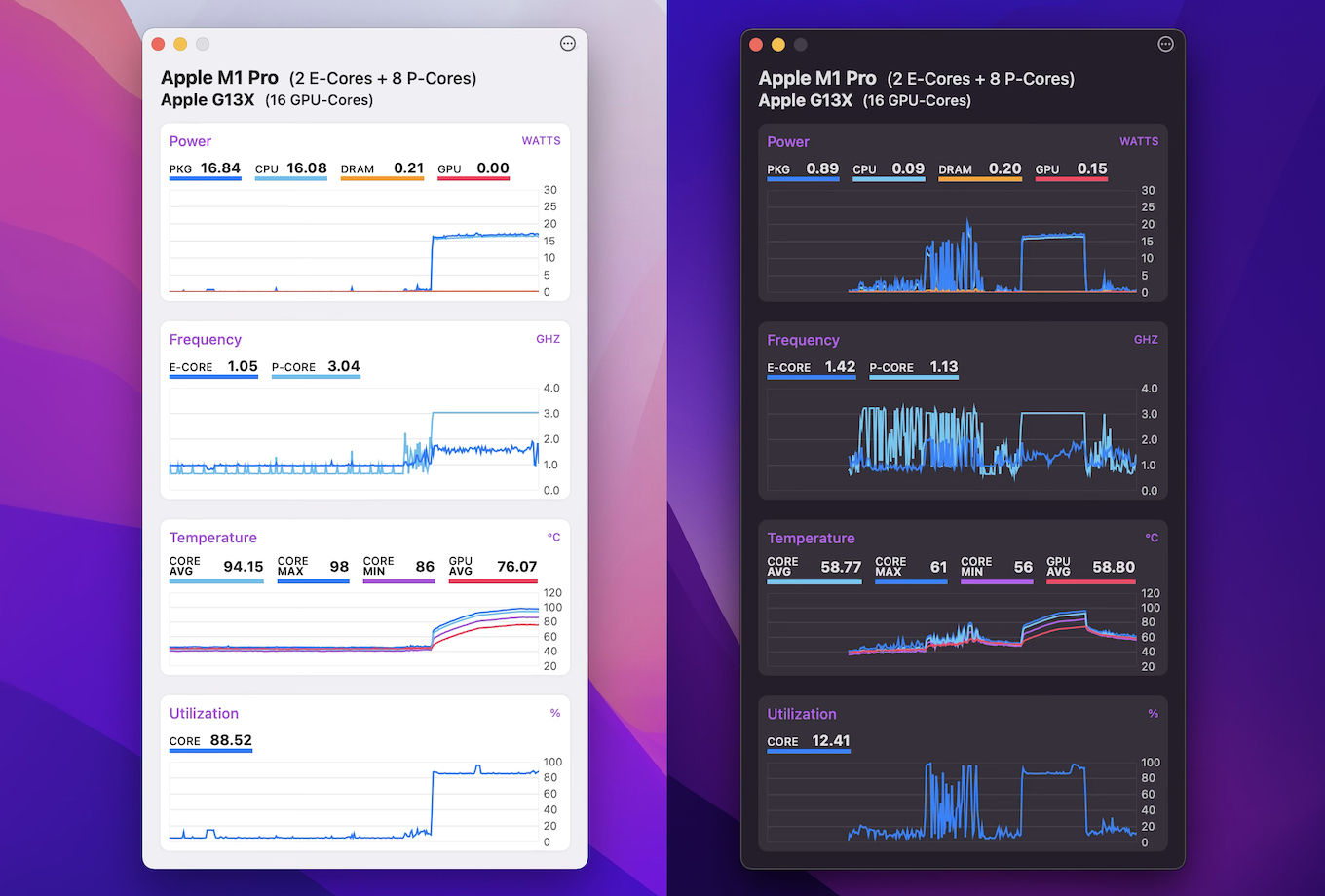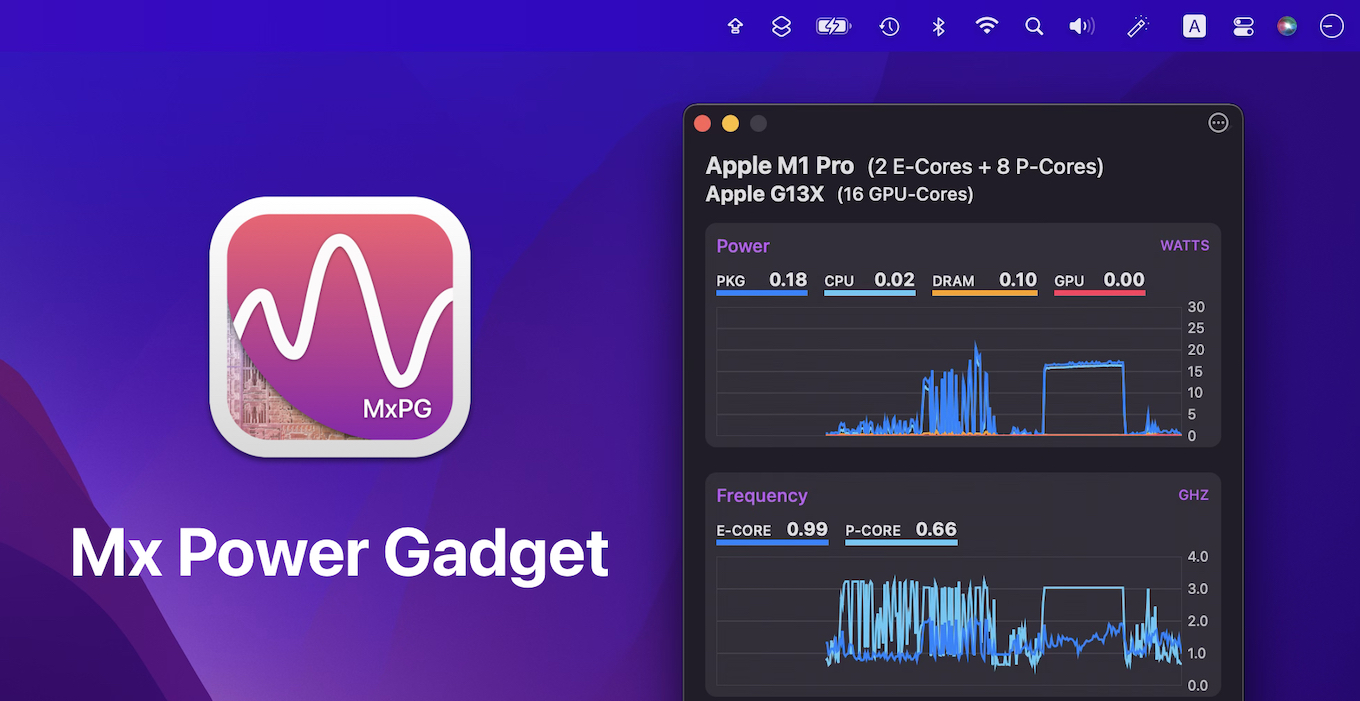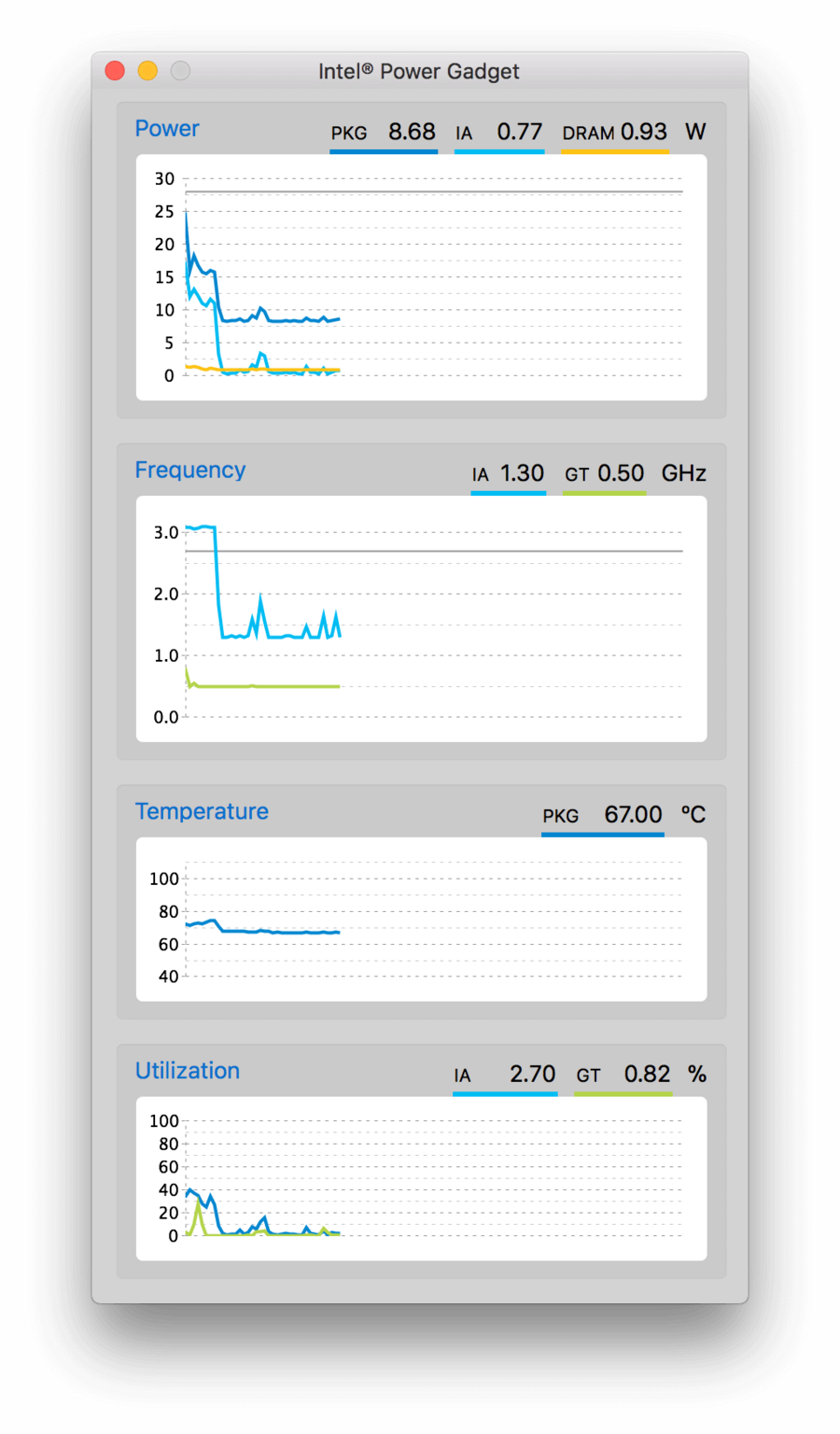

- #Intel power gadget mac how to
- #Intel power gadget mac full
- #Intel power gadget mac software
- #Intel power gadget mac download
Uninstalling Intel Power Gadget on Macĭecide you don’t need Intel Power Gadget? Uninstalling Intel Power Gadget is quite simple. If you’re interested in doing so, you can see this directly and test it yourself by running any CPU intensive task, like the Terminal command ‘yes’, which is often used for stress testing a Mac (or any Linux PC):Īs you can see the graphs for power, frequency, temperature, and utilization suddenly shoot way up as the ‘yes’ command runs in the adjacent Terminal window as a stress test, which is normal and expected behavior for the processor. It is completely normal for the processor charts to be changing constantly, and you’ll find that the processor clock speed may go up or down, as will both CPU temperature and power, typically correlated with processor utilization – this makes sense as more processing utilization requires more power to have a higher clock speed, which raises the temperature of the CPU, and of course the opposite can happen as well with CPU speed lowering along with lower power and lower temperature and utilization when the Mac is less busy. If you run Intel Power Gadget while you’re using the Mac, you may notice that processor performance can change around quite a bit depending on what you’re doing and what sort of apps you’re using. When finished, launch Intel Power Gadget from the /Applications folder as usual.The Intel Power Gadget installer should proceed as usual and successfully install, if it fails then just run the “Install Intel Power Gadget.pkg” package installer again.
#Intel power gadget mac software

#Intel power gadget mac download
#Intel power gadget mac how to
Here’s how to successfully install the tool in modern macOS releases:

Installing Intel Power Gadget on the Mac is easy, though you may run into a Gatekeeper security block that can cause installation trouble. How to Install Intel Power Gadget on MacOS This installation failure is usually due to a default security setting in MacOS, and is easy to resolve.
#Intel power gadget mac full
What really stands out to me is how often my 4GHz CPU is running at something closer to 3GHz if the CPU isn't being called on for its full power, I'm assuming it slows itself down to reduce power usage.īut as soon as you do something that demands the CPU's full power, the napping stops.Newer versions of MacOS can sometimes have trouble installing Intel Power Gadget, and many MacOS Mojave users have discovered the installation fails or the app doesn’t work. The data you're seeing there is from my 4GHz Retina iMac, and the screenshot was grabbed while it wasn't doing much in particular. As seen in the image at right (click for larger), it graphs these three values over time. The Intel® Power Gadget shows you exactly what your CPU is up to: how much power it's using, what speed it's running at, and its temperature. Neither of these tools, however, really show you what the CPU itself is up to-and that's where an Intel-provided tool enters the scene. If you're the type who likes to keep an eye on your system, you may be familiar with tools such as Activity Montior's CPU meters, or iStat Menus, which displays a ton of system info via its menubar icon.


 0 kommentar(er)
0 kommentar(er)
